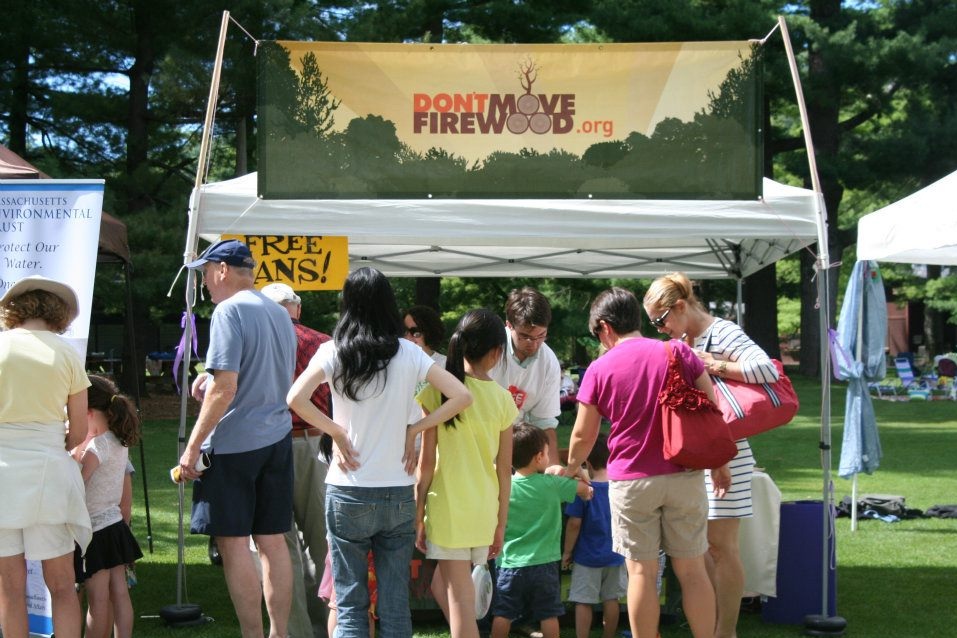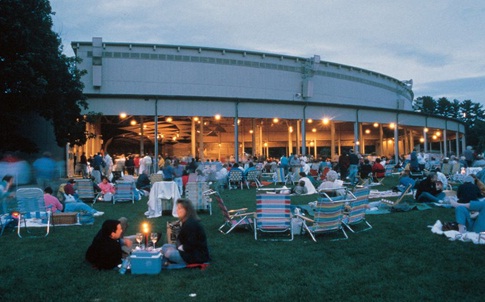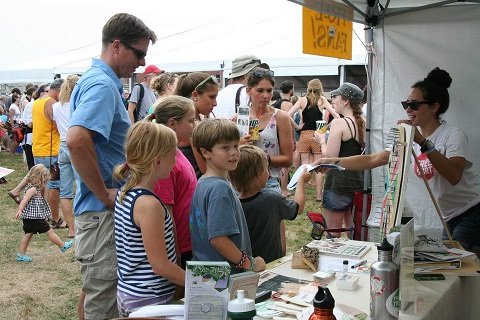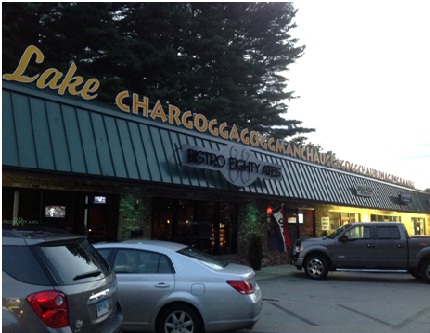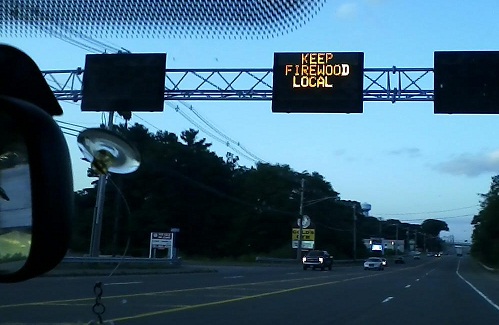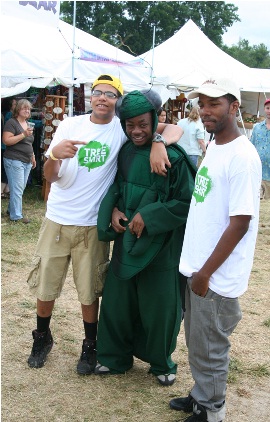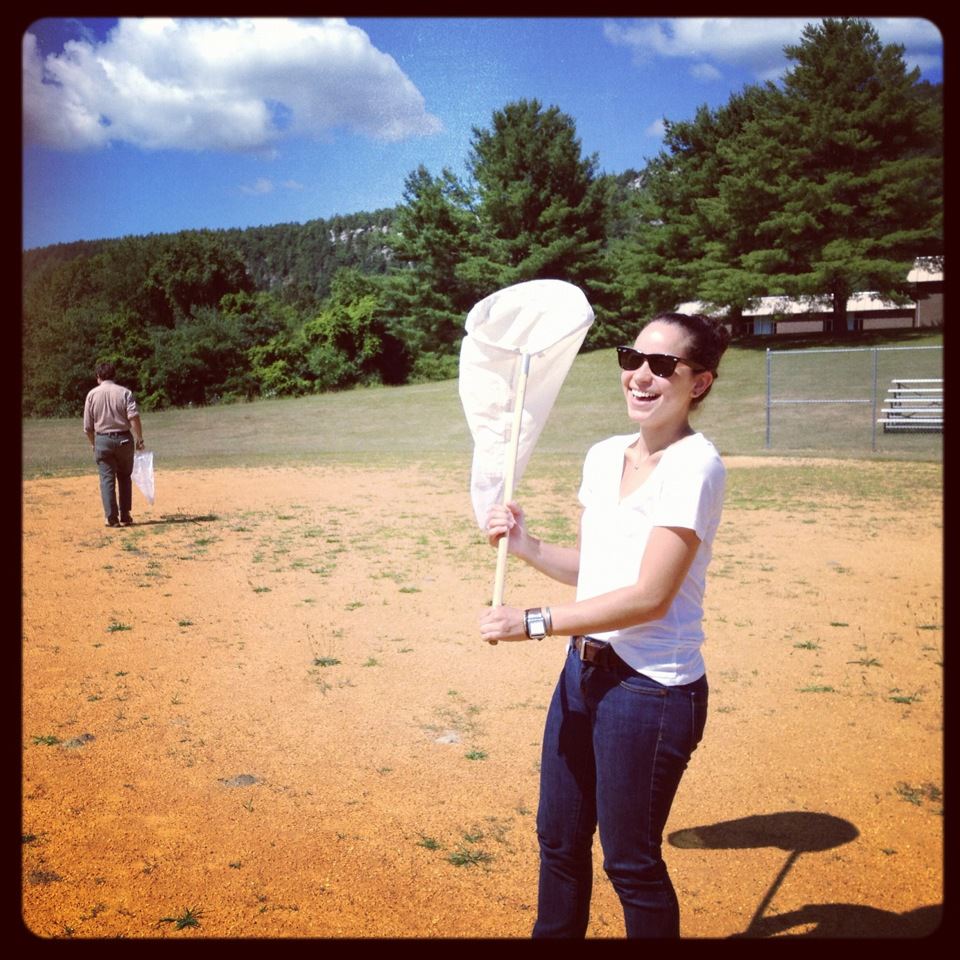This just in! A press release from the Massachusetts Executive Office of Energy and Environmental Affairs has announced an adult emerald ash borer was found on a purple trap in Dalton, Massachusetts. Please note that the author of this press release is NOT Don't Move Firewood, it is the Massachusetts Executive Office of Energy and Environmental Affairs. The entirety of the release is below.
State Officials Confirm Emerald Ash Borer Detected in Massachusetts for First Time
Press Release Contacts: SJ Port — 617-626-1453 or sj.port@state.ma.us; Krista Selmi — 617-626-1109 or krista.selmi@state.ma.us
Boston – September 12, 2012 – Officials with the Massachusetts Department of Conservation and Recreation (DCR) and the Department of Agricultural Resources (DAR) today announced that the Emerald ash borer (EAB) has been detected in Massachusetts. The destructive beetle was detected in the western Massachusetts town of Dalton on August 31, 2012, and was confirmed by federal officials on September 6. Massachusetts is the 18th state in the country to detect EAB.
DCR and DAR officials are working together, in collaboration with the United States Department of Agriculture’s (USDA) Animal and Plant Health Inspection Service (APHIS) and the USDA’s United States Forest Service to take a number of swift proactive steps aimed at preventing the spread of the invasive beetle, including:
- Defining a quarantine area that would only allow the movement of certain wood products under certain conditions.
- A de-limiting survey to help identify the extent of the infestation.
- Working with stakeholders to ensure they know how to properly treat or dispose of infested trees and materials.
- A survey with federal agencies to determine how long the area in which EAB has been present in our state, information which will help determine strategies in how to best address the threat.
- DCR will also maintain a ban that has been in place against bringing any firewood into state parks and forests.
“The Emerald ash borer brings a very serious threat to our ash trees, and we are not taking its presence lightly,” said DCR Commissioner Ed Lambert. “We are taking swift action to address the infestation, and are working to mitigate any impact an infestation could bring.”
“Together with DCR, we are moving forward to develop and implement the best strategies to contain this invasive pest,” said DAR Commissioner Greg Watson.
Regulated items that would fall under quarantine include the following:
- The Emerald ash borer, in any living stage of development;
- Firewood of all hardwood species;
- Nursery stock of the genus (Ash);
- Green lumber of the genus (Ash);
- Other material living, dead, cut, or fallen, including logs, stumps, roots, branches, and composted and uncomposted chips of the genus (Ash);
- Any other article, product, or means of conveyance that an inspector determines presents a risk of spreading Emerald ash borer and notifies the person in possession of the article, product, or means of conveyance that it is subject to the restrictions of the regulations.
The EAB is a small, flying beetle, native to Asia. It was first discovered in North America in 2002, in the Detroit, Michigan area. Unlike other invasive beetles, the EAB can kill a tree fast, within just a few years, because it bores directly under the bark, where the tree’s conductive system is. Since its discovery in North America, it has killed millions of ash trees and has caused billions of dollars in economic loss across the nation.
Ash is a main component of the Northern Hardwood forest in Massachusetts and is a common species in the Berkshires. Ash is also a common street tree in eastern Massachusetts.
Residents are urged to take the time to learn the signs of EAB tree damage and be sure to report any sightings.
- Look for tiny, D-shaped exit holes in the bark of ash trees, die-back in the upper third of the tree canopy, and sprouting of branches just below this dead area.
- The Emerald ash borer is a tiny, emerald-green metallic beetle, so small that seven of them could fit on the head of a penny.
To report suspicious tree damage or insect sightings, or to learn more about this pest, visit www.massnrc.org/pests. You can also call the toll free EAB hotline at 1-866-322-4512.
More information about EAB: https://emeraldashborer.info
###
Follow Secretary Sullivan on Twitter……………………..twitter.com/massEEA
View videos on You Tube………………………………….www.youtube.com/MassEEA
View downloadable photographs on Flickr:…………….. www.flickr.com/photos/masseea/sets/
Visit the Energy Smarts blog:……………………………… www.mass.gov/blog/energy
Visit The Great Outdoors blog:….………………………..www.mass.gov/blog/environment
Visit our website:………………………………………………. www.mass.gov/eea
100 Cambridge Street, Suite 900, Boston, MA 02114-2119 — (617) 626-1000 office / (617) 626 1181 (fax)




